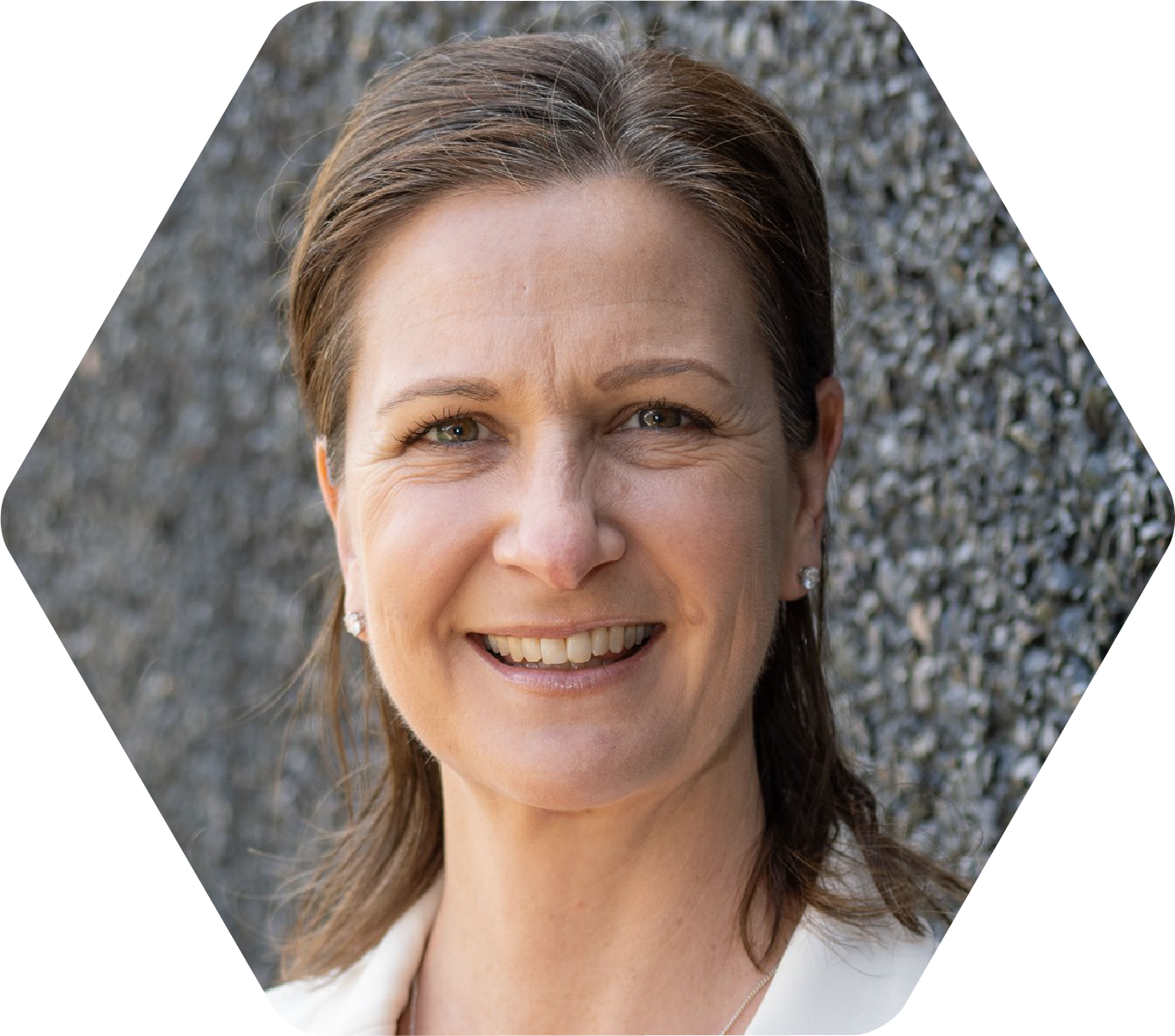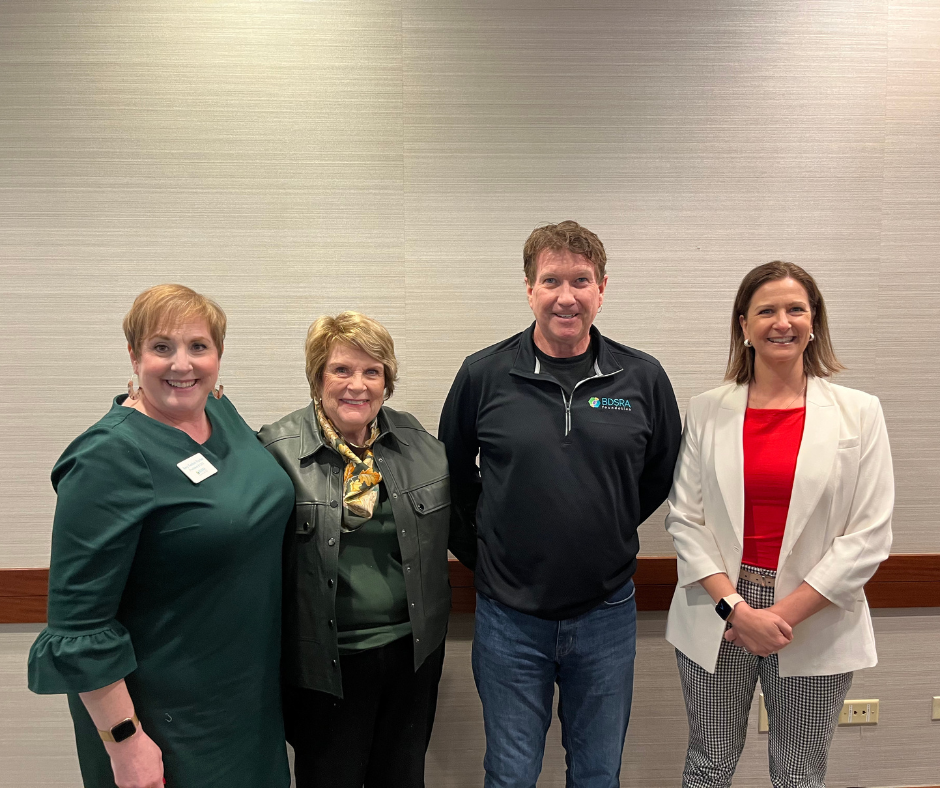It’s time for research updates! BDSRA Foundation’s Head of Research & Medical Affairs Dr. Ineka Whiteman breaks down Batten disease clinical program updates, research news & opportunities, and resources in her monthly column, as seen in BDSRA’s monthly newsletter, The Illuminator.
NCL Translational Research Conference Summary
On November 20-22, BDSRA President & CEO Amy Fenton Parker, Heather Dainiak (BDSRA’s Director of Family Support), and I attended the 8th Translational Research Conference for the Management of NCLs in Chicago. Hosted by Our Promise to Nicholas Foundation, this bi-annual meeting brings together leading NCL researchers, clinicians, and industry and advocacy partners worldwide, alongside experts from outside the NCL field who bring fresh perspectives and novel insights from other technical disciplines and therapeutic areas.
Welcome Reception
On the opening night, we heard from Dr. Jon Mink, Chair of the Centers of Excellence (CoE) Steering Committee, on the CoE Program to date. Dr. Liz Berry-Kravis (RUSH University Medical Center) presented insights and learnings from other rare diseases, particularly Niemann Pick C and the recent FDA approvals for NPC therapies.
Day 1 – Developing New Therapies & Considerations for Clinical Trial Design
The first full day focused largely on the key principles and approaches to developing new therapies, including learnings from other rare lysosomal disorders such as MPS disorders. In the first session, we heard about the challenges and complexities of conducting clinical trials in Batten disease, and the role and importance of stakeholder collaborations between patient advocacy groups, pharmaceutical, academic, and clinical teams in aligning research priorities for Batten disease.
Clinical Trial Design and Patient Trajectories
The following session addressed strategies for leveraging therapeutic platforms to target multiple diseases simultaneously, integrating real-world data and AI to improve diagnosis and patient care, and using natural history data to manage phenotypic variability in trial design.
Natural History and Biomarker Development
Session 3 highlighted the importance of natural history studies for advancing trial readiness, emphasizing collaborative research models. Discussions focused on family involvement in rare disease research, blood-based biomarker discovery, and the role of large animal models in bridging preclinical and clinical findings.
Exploring Atypical Disease Phenotypes
The final session examined atypical presentations of Batten disease, with insights into disease effects beyond the central nervous system and the need for refined diagnostic criteria to account for variability.
Day 2 – Advanced Therapeutic Strategies
The conference’s second day drilled down into advanced therapeutic approaches for Batten disease, exploring small molecules, enzyme replacement therapies (ERTs), gene therapies, and nucleic acid-based strategies. Sessions provided insights into innovative research, translational progress, and regulatory pathways, with moderated discussions fostering collaboration and knowledge exchange.
Small Molecules, ERTs, and Biologicals
The day began with discussions on computational modeling to identify therapeutic targets, stem cell-based compound screening for CLN3 disease, and leveraging common cellular pathways to develop treatments across lysosomal storage diseases. Progress on enzyme replacement therapy for CLN1 highlighted potential advancements toward clinical application.
Gene Therapy – AAV-Based Approaches
Session 2 examined AAV-based viral-mediated gene therapy programs targeting various Batten disease subtypes. Presentations included updates and key learnings from clinical programs for CLN1, CLN2, and CLN7 disease, along with lessons from preclinical and translational studies in CLN5 disease, where sheep models have proven highly valuable.
Lentiviral and Gene Editing Approaches
The focus shifted to ex vivo lentiviral gene therapies, highlighting case studies on innovations in autologous stem cell-based treatments for CLN1 disease and other lysosomal storage disorders. Subsequent discussions on nucleic acid therapies explored personalized antisense oligonucleotide (ASO) ‘bench-to-bedside’ strategies, with insights into two individualized medicine journeys in CLN7 disease (Milasen) and most recently, CLN3 disease (Project Butterfly).
I returned home yet again invigorated and inspired by the collective determination and dedication of so many in the NCL and broader rare disease community. Thank you to all the conference sponsors, organizers, speakers, and attendees, and a special shout out to Dr. Jill Weimer and her team at Sanford Research for putting together such an impressive and inspiring program.
Attendees at the 8th Translational Research Conference for the Management of NCLs in Chicago.
Centers of Excellence General Meeting in Chicago
The Translational Research Conference in Chicago was a great opportunity for the Centers of Excellence group to come together in person for a half-day meeting on November 20. We were honored to have Dr. Angela Schulz and Dr. Miriam Nickel from the Children’s Hospital at the University Medical Center Hamburg-Eppendorf in Hamburg, Germany, join us for part of this meeting. Key meeting objectives were to discuss updates and strategies for advancing Batten disease natural history research, including practical approaches to ensuring a unified approach to data collection and analysis for all types of Batten disease.
Attendees at the Centers of Excellence General Meeting in Chicago.

Dr. Liz Berry Kravis (left) of RUSH University Medical Center, Batten Disease Center of Excellence Affiliate, with Dr. Ineka Whiteman (right).
Visit to RUSH Center of Excellence Affiliate Center, Chicago
During my visit to Chicago, I was excited to have the opportunity to join the team in the clinic at RUSH University Medical Center, one of our Batten Disease Centers of Excellence Affiliate sites. Batten Disease Clinic Director, Dr. Liz Berry-Kravis (pictured), and her team including Dr. Tamar Caceres (Neurology), Stella Boeckman (Clinic Coordinator), and Kendall Robbins (Clinical Research Coordinator) provide comprehensive care for individuals with Batten disease, other lysosomal storage diseases and complex conditions. The Center is also involved in clinical trials investigating gene therapies, including the current “N of 1” gene therapy for CLN1 disease (read more here). Thank you for hosting me, Dr. Berry-Kravis, and team!
NCL2025 Congress website now live!
On behalf of the NCL2025 Organising Committee, we are thrilled to be hosting the 19th International Congress on Neuronal Ceroid Lipofuscinosis (NCL) in the stunning surrounds of the Sunshine Coast, Queensland, Australia. As the premier conference on Batten disease, the bi-annual NCL Congress brings together world-leading researchers, healthcare providers, industry partners, innovators, and patient advocacy leaders worldwide.
In 2025, we are excited to combine NCL Congress with the BDSRA Australia Family Conference, providing an invaluable opportunity for meaningful engagement and shared learning between Congress delegates and the Batten disease family community.
The website is now live – please visit NCL 2025. Here you can register to stay up-to-date with the latest meeting information and news including venue and accommodation details, programs, and abstract submissions.

Wishing you all a warm and wonderful holiday season. May this Christmas bring moments of peace, joy, and togetherness.
Together, we remain stronger than ever in our shared mission.
Warm regards,

CLINICAL PROGRAM UPDATES
Clinical Trial Tracker
Keep up-to-date with the latest clinical trial and natural history study news with our Clinical Studies Chart on BDSRA’s website. Check it out by clicking here.
Beyond Batten Disease Foundation/Theranexus – Batten-1 (miglustat) Program for CLN3 Disease
12-month clinical data presented at Child Neurology Society Annual Meeting in San Diego
At the Child Neurology Society Annual Meeting in San Diego on November 11-14, Theranexus and the Beyond Batten Disease Foundation (BBDF) presented the final and positive results of the Phase I/II trial to evaluate Batten-1 in six young adult patients with CLN3 Batten disease after 18 months of treatment.
The presentation highlighted the strong safety profile of miglustat in CLN3 Batten disease patients and underscored the positive efficacy data gathered during this trial.
“The findings demonstrate clear target engagement, a biological effect, and are suggestive of a stabilization of disease progression over the treatment period,” the statement said. “All trial participants chose to continue receiving miglustat through the BBDF’s early access program, with no safety concerns reported after two years of ongoing treatment.”
Read the press statement here.
The meeting abstract can be viewed here (see ABSTRACT 100).
Neurogene Inc. – Gene Therapy for CLN5 Batten disease
Neurogene is developing the AAV-mediated gene therapy “NGN-101” for the treatment of CLN5 disease, with a Phase 1/2 study of six treated patients currently active and fully enrolled (Clinical trial ID: NCT05228145). In a press release on November 11 however, Neurogene announced that the Company did not expect to move forward with the NGN-101 CLN5 Batten disease gene therapy program at this time.
“Given the rarity of the disease,” the company stated, “continued investment in the program was predicated on alignment on a streamlined registrational pathway with FDA. To support a streamlined pathway, Neurogene submitted a Regenerative Medicine Advance Therapy (RMAT) application to the FDA. Despite the Company’s belief that the application met the standard of preliminary clinical evidence required to obtain an RMAT designation, the RMAT application was denied. Neurogene is currently evaluating options for the program.”
The BDSRA Foundation, with our patient advocate partner, BDFA UK, has been working with Neurogene and other key stakeholders to offer our support as they consider the RMAT application outcome and continue evaluating the best path forward for this program. We will continue to keep our global community informed.
Read Neurogene’s press release here.
PUBLICATION HIGHLIGHTS – November 2024
Psychometric Validation of the CLN2 Quality of Life Questionnaire in Participants with CLN2 Disease Treated with Cerliponase Alfa.
Due C, Quinn J, Gissen P, et al.
Healthcare (Basel). 2024 Nov 8;12(22):2229. doi: 10.3390/healthcare12222229. PMID: 39595427
Functionally overlapping intra- and extralysosomal pathways promote bis(monoacylglycero)phosphate synthesis in mammalian cells.
Bulfon D, Breithofer J, Grabner GF, et al.
Nat Commun. 2024 Nov 16;15(1):9937. doi: 10.1038/s41467-024-54213-1. PMID: 39548099
Genetic and Cellular Basis of Impaired Phagocytosis and Photoreceptor Degeneration in CLN3 Disease.
Han J, Chear S, Talbot J, et al.
Invest Ophthalmol Vis Sci. 2024 Nov 4;65(13):23. doi: 10.1167/iovs.65.13.23. PMID: 39535788
Intragenic duplication disrupting the reading frame of MFSD8 in Small Swiss Hounds with neuronal ceroid lipofuscinosis.
Rietmann SJ, Loderstedt S, Matiasek K, et al.
Anim Genet. 2024 Dec;55(6):801-809. doi: 10.1111/age.13485. Epub 2024 Oct 22. PMID: 39434657
Cathepsin D inhibition during neuronal differentiation selectively affects individual proteins instead of overall protein turnover.
Schneider J, Mitschke J, Bhat M, et al.
Biochimie. 2024 Nov;226:35-48. doi: 10.1016/j.biochi.2024.03.013. Epub 2024 Mar 28.
PMID: 38552867
Increased SNAI2 expression and defective collagen adhesion in cells with pediatric dementia, juvenile ceroid lipofuscinosis.
Kim H, Bae S, Kim SJ.
Biochem Biophys Res Commun. 2024 Dec 17;738:150561. doi: 10.1016/j.bbrc.2024.150561. Epub 2024 Aug 15. PMID: 39154552






